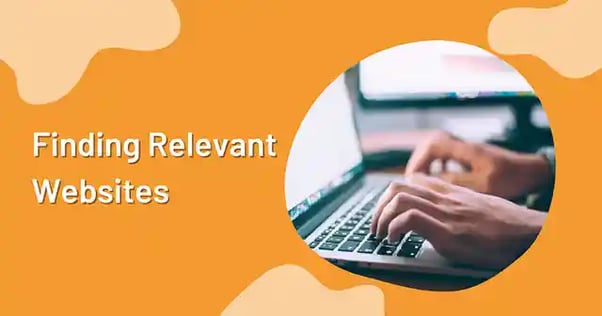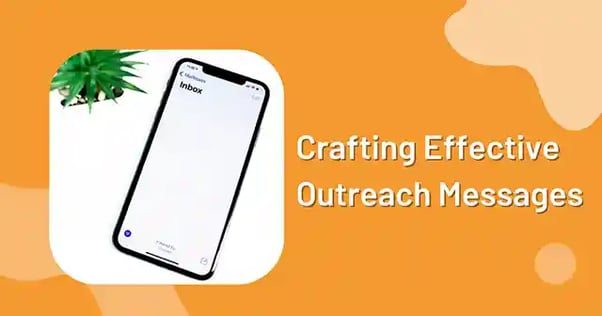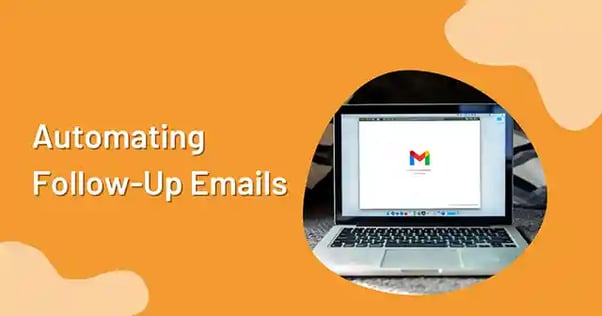5 Ways that ChatGPT Can Improve Your Link-Building Outreach
- Home
- 5 Ways that ChatGPT Can Improve Your Link-Building Outreach
ChatGPT has recently set the record for the fastest app to reach 100 million active users, achieving that milestone in just two months.
The A.I. language model has taken the world by storm and changed the game for every single user. From high schoolers trying to ace a test doing as little work as possible, to high-performing professionals looking to improve their productivity.
And while every business has something to gain from using ChatGPT, some are a better match than others. The digital marketing world has adopted A.I. quicker than any other industry, for example.
In today's competitive online landscape, mastering the art of link-building outreach is essential for businesses to stand out, and ChatGPT can enhance your link-building strategies in ways you might have never imagined.
In this article, we will be exploring the top 5 ways that ChatGPT can improve your link-building outreach efforts, streamline your processes, and help you build lasting relationships with authoritative sites in your niche.
Finding Relevant Websites

To build effective backlinks, which offer numerous benefits, it is essential to target websites that are relevant to your niche and audience. However, manually searching for these sites can be a time-consuming and challenging task.
This is where ChatGPT can come in handy. The AI-based chatbot uses advanced algorithms to analyze your niche and audience and provides you with a list of websites that are relevant to your brand.
ChatGPT can also help you find websites that have a high domain authority and are link-worthy. This means that you can focus on building links with websites that have a better chance of improving your search engine rankings and increasing your online visibility.
You’ll save money and time by not having to hire a contractor to perform this task or do it yourself. After you automate the process, you can spend your time focusing on other aspects of your marketing strategy.
Using advanced search queries and natural language processing
Advanced search queries are a feature that allows ChatGPT to perform complex searches that go beyond simple keyword searches.
This means that it can find websites that are related to your niche based on different factors such as content topic, location, context, and more.
For example, you can use search queries to find websites that are related to your niche but are not direct competitors.
At the same time, natural language processing helps ChatGPT understand the context and meaning of your search queries.
This will provide you with more accurate and relevant results that are aligned with your search intent, as ChatGPT can differentiate between websites that mention your keyword briefly and those that are dedicated to it.
Using advanced search queries and natural language processing can also help you identify websites that are open to link-building outreach.
By analyzing their content, ChatGPT can determine if the website author is open to receiving outreach requests. This can save you a lot of time by avoiding websites that are not interested in link building.
Overall, using advanced search queries and natural language processing can significantly improve your link-building outreach strategy. By using these features in conjunction with ChatGPT's ability to find relevant websites, you can increase your chances of building effective backlinks that strengthen your online visibility and search engine ranking.
Crafting Effective Outreach Messages

Now that you know how to find relevant websites, it’s time to start reaching out, and you don’t want to send them generic emails.
Here’s a quick guide for an effective outreach message:
- Research the website and the person you're contacting. This shows that you've done your homework and are serious about building a relationship with them. It also allows you to tailor your message to their specific needs and interests.
- Be clear about why you're contacting them and what you're offering. Are you looking for a guest posting opportunity, a link exchange, or simply asking for a link? Make sure your message is clear and concise, and avoid using vague or fluffy language.
- Keep your tone friendly and professional. You want to come across as someone who is genuinely interested in building a relationship with the website owner.
- Make sure you follow up with website owners who don't respond to your initial outreach. A friendly follow-up message can be just what's needed to get a response and start building a relationship.
ChatGPT will seriously accelerate this process and provide you with all the steps. It’s a powerful research tool, and it will also help you write concise messages with the right tone.
Incorporating natural language and tone to increase response rates
Using natural language and tone in your outreach messages not only helps you build stronger relationships but also increases response rates.
If your language sounds robotic or too generic, it will put off a lot of your readers.
Natural language gives your message a more personalized feel, which indicates that you’ve taken the time to do research and write your message specifically for them. You will tailor your message to their interests and needs by using words or phrases they are likely familiar with.
You can prompt ChatGPT to be conversational, use specific language that resonates with the reader, adjust for the appropriate tone, and even be humorous.
Just keep in mind that ChatGPT is still very much in development, so even if you come up with the perfect prompts, some parts of your text might still sound robotic and unnatural.
So even though the A.I. is doing the bulk of the work, it’s highly recommended that you or an employee do some light editing before sending out the messages.
Automating Follow-Up Emails

When doing outreach, you should always follow up with the website owner.
However, keeping track of who you've contacted and when you should follow up can be a time-consuming and tedious process. That's where automating your follow-up emails comes in.
Many email marketing platforms offer automation features, allowing you to schedule follow-up emails to be sent automatically at a specific time.
Automating follow-up emails comes with many benefits:
- It ensures that you never miss an opportunity to follow up with a website owner who hasn't responded yet.
- It helps you maintain consistency in your messaging, ensuring that your follow-up emails have a similar tone and message as your initial outreach.
- It makes it easy to keep track of your progress.
- You can set up reminder emails to be sent to yourself, reminding you when it's time to follow up with a particular website.
Probably the most important aspect, it allows you to closely monitor your outreach campaign's progress and identify any areas that require improvement.
You’ll have access to powerful metrics and data that will help you make better decisions quickly.
Setting up a personalized email sequence with different messages
A personalized email sequence involves sending a series of emails to a particular website owner, each with a different message targeting specific aspects of their website.
This approach not only piques the recipient's interest but also increases the likelihood of building a meaningful relationship with them.
To set up a personalized email sequence, first, segment your list of contacts into relevant groups based on their website's niche and the type of backlink you're seeking.
Next, create a series of personalized messages that focus on the recipient's interests and needs, along with offering different angles for why a backlink from their site would be beneficial.
Using ChatGPT during this step will allow you to craft messages that are tailored to your readers in minutes.
Finally, make sure to space out your emails by a few days to allow the recipient enough time to read and respond. Also, make sure to include a clear call-to-action (CTA) in every email to encourage the recipient to take action.
Following these steps will significantly improve your link-building outreach by increasing response rates and building a strong relationship with website owners.
Monitoring Responses and Tracking Progress
![]()
By keeping track of your efforts and the response rates, you can identify areas that require improvement and take corrective actions to ensure your outreach efforts are effective.
One way to monitor your outreach campaign's progress is to create a spreadsheet that lists all the website owners you have contacted, along with the dates and messages sent.
This spreadsheet will help you keep track of your outreach efforts and follow-up activities, ensuring that you don't miss any opportunities.
Moreover, regularly monitoring the responses you receive from website owners will help you understand what works and what doesn't in your outreach campaign. By analyzing the response rates, you can identify the messages and strategies that are most effective at building relationships and securing backlinks.
Use this information to refine your outreach approach and improve your campaign's effectiveness.
Another way to monitor your outreach efforts is to use specialized software that can track your emails' open and response rates. By using this type of software, you can monitor how many emails were opened, how many links were clicked, and how many replies you received.
Pairing email marketing software with ChatGPT will give you a serious boost in productivity and provide valuable insights into the success of your campaign and help you make data-driven decisions to improve it.
Analyzing data and making adjustments to improve the effectiveness
By leveraging the data collected from outreach campaigns, you can identify areas that require adjustment, tweak your communication strategy, and tailor your efforts to meet the unique needs of website owners.
The first step towards analyzing your email outreach data is to understand your benchmark metrics. These include your open rate, click-through rate, and response rate.
Once you have this information, you can dig deeper into the data to identify the types of messages that resonate with website owners, the best days and times to send follow-ups, and the types of CTAs that produce the most responses.
By using its analytics and reporting features, you can determine the effectiveness of your email templates, identify the emails that receive the most replies, and optimize your outreach to generate more backlinks.
At this point, you can use ChatGPT to create dozens of messages similar to the ones that are getting the best responses.
Another way to analyze your outreach data is to use A/B testing. By testing different email outreach approaches on a smaller segment of contacts, you can measure the effectiveness of each approach before scaling it up.
This will help you optimize your emails and make them more enticing to website owners, ultimately improving your outreach campaign's effectiveness.
Streamlining the Outreach Process

Once you have proven strategies, one potent way to streamline your outreach is by creating templates that you can use when reaching out to website owners.
For the best results, these templates should be customized to fit each website's specific needs and requirements, but they can still save you time and effort in the long run.
Another useful strategy is to use tools like ChatGPT to automate the outreach process. With ChatGPT, you can create custom email templates that are tailored to each website's unique needs. You can then schedule these emails to be sent at the right time, ensuring that you always reach out when website owners are most likely to respond.
It's also essential to remember that streamlining your outreach process isn't just about efficiency. It's also about making sure that your outreach is high-quality and effective.
By using effective strategies and templates, you can ensure that your outreach is always professional and persuasive, increasing your chances of building relationships with website owners and securing valuable backlinks.
Streamlining your outreach process is a crucial component if you’re looking to scale your link-building efforts. By using tools like ChatGPT and creating customized templates, you can automate your outreach efforts, track your progress, and increase your chances of success.
Automating repetitive tasks and allowing for more focus on high-value activities
How about freeing up valuable hours that would otherwise be spent on monotonous and tedious tasks like scouring the internet for potential link-building opportunities?
You’d be able to devote more attention to high-value activities, such as creating quality blog content or building relationships with website owners.
One key benefit of automating repetitive tasks is that it can help you scale your outreach efforts more effectively.
And with brand-new tools like GPT-4, you can create custom email templates that can be sent out to hundreds or even thousands of contacts at once, maximizing your outreach efforts and increasing your chances of success.
Conclusion
ChatGPT is already a fantastic resource for link-building outreach, enabling businesses to streamline their outreach process, increase their chances of success, and build better relationships with website owners.
The fact that it’s still very much a work in progress and constantly receiving updates suggests that in the future, it’s going to be an even bigger part of business operations.
So don’t wait any longer – start optimizing your link-building efforts today! And if you know anyone who still isn’t making use of ChatGPT in their workplace, remember to share this article with them!

